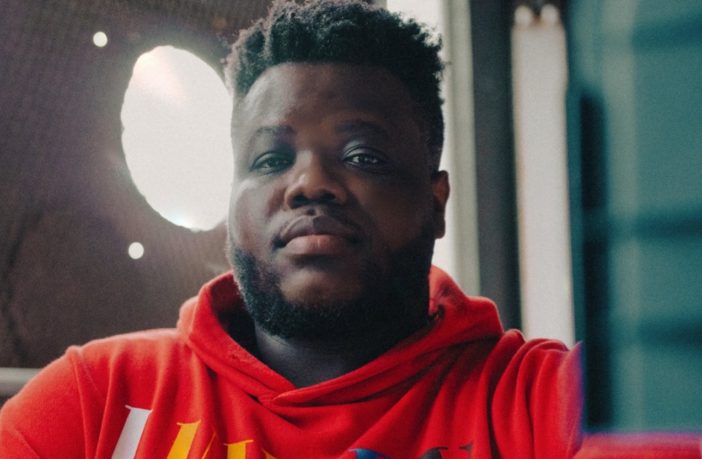Morel Doucet is an artist and arts educator who employs ceramics, illustrations and prints to examine the realities of climate gentrification, migration and displacement within the Black diaspora communities. Born in Pilate, Haiti, Doucet now resides in Miami.
At EBONY FWD, Doucet is showcasing pieces from his debut solo exhibition, Water Grieves in the Six Shades of Death, a title that metaphorically expresses the artist’s emotional response to water pollution and rising sea levels affecting marginalized communities.
EBONY: When and how did you discover your love of art?
Morel Doucet: My passion for art began at Lake View Elementary School in Miami. Assigned to create an animal reflecting my characteristics, I chose a snail, fascinated by its unique features. As a student, I learned to work with various mediums such as clay, and developed a passion for exploring and experimenting with art. I grew up in Miami during the 1990s and was fortunate enough to benefit from the magnet arts programs that were popular throughout the city. Despite my family’s expectations for me to pursue a more conventional career, I embraced my identity as an artist and cultural practitioner. This journey led me to attend New World School of the Arts High School and later to the Maryland Institute College of Arts in Baltimore. For me, being an artist is more than just a choice; it is a fundamental part of who I am at this critical stage of my life.
How do you describe your artistic medium?
I express my artistic vision through various mediums, including ceramics, printmaking, collage, mixed-media drawing and impressions of native flora and fauna. These elements are intricately combined to explore issues of environmental decay, community displacement and policy-making. The complexity and detail in my pieces, such as ceramics, emphasize the importance of preserving cultural heritage and legacy. From the formation of our planet to a future beyond our time on Earth, ceramics persist as a testament to our shared history and will continue to exist in the cosmic tapestry. Throughout human history, archaeologists have unraveled the narrative of our past through the ceramic pieces scattered across the globe. With the global rise of artists such as Simone Lee and Roberto Lugo, ceramics have taken a prominent place in contemporary art, transcending time, place, and culture.
What messages do you impart through your art?
My art conveys a powerful message about environmental justice and social inequality, with a particular focus on the impact of climate change and developers on marginalized communities. I draw inspiration from the communities of South Florida, especially Miami’s Little Haiti neighborhood, where the effects of climate change and gentrification are acutely felt. Through my intricate works, I aim to highlight the significance of preserving cultural heritage and advocating for community rights in the face of rapid development and gentrification. The ultimate goal of my art is to raise awareness and foster dialogue, encouraging viewers to reflect on the intersection of environmental and social issues and inspiring collective action towards a more just and sustainable future.
Can you tell us about your work at EBONY FWD?
The works explore environmental racism in Miami’s Little Haiti. They include ceramics and silhouettes, which symbolize interconnected environmental harms. My intricate pieces emphasize preserving cultural heritage and advocating for community rights amid development while raising awareness of environmental justice and social inequality, encouraging collective action for a more sustainable future.
How are you moving Black art forward? How can the world support and nurture Black artists?
My artistic endeavors aim to promote Black art by highlighting environmental racism and displacement of marginalized communities and raising awareness about environmental justice and social inequality. To support and nurture Black artists, the world can prioritize diversity and inclusion in the art industry. This includes increased representation in galleries, museums and art institutions. Investing in educational programs and mentorship initiatives for Black artists can provide essential support, helping to bridge gaps and create opportunities. Financial support is crucial, and patrons and organizations can contribute by purchasing artwork, sponsoring exhibitions, or providing grants and scholarships. Additionally, fostering open dialogue about the experiences and challenges faced by Black artists helps create a more inclusive and equitable art community. Ultimately, supporting and nurturing Black artists involves a collective effort to dismantle systemic barriers and ensure equal opportunities for artistic expression and recognition.



